The Denver & Rio Grande Railway And Its Markings
By Cres Fleming
Introduction
During its early years the Denver & Rio Grande Railway Company abbreviated its railway name several ways: RW, RY and R.Co. This article attempts to straighten out when these abbreviations were used as demonstrated by markings on various artifacts produced for the D&RG.
I believe the Denver & Rio Grande Railroad Company used RW as an abbreviation for Railway from its founding in 1870 until mid to late 1882 or early 1883. It then used RY to abbreviate Railway until it emerged from bankruptcy in July of 1886. To my knowledge the abbreviation of R. Co. has only been found on a few early six lever locks. These will be discussed as a special case.
Company History
The Denver and Rio Grande Railway Company was incorporated on October 27, 1870 by General Willman Jackson Palmer (Robert A. LeMassena, Rio Grande to the Pacific, Sundance Publishing Company, 1974, p. 15). It remained with that name until it emerged from bankruptcy on July 14, 1886, as the Denver and Rio Grande Railroad Company (ibid., p. 46). It remained the Denver and Rio Grande Railroad Company until it emerged from a later bankruptcy on August 21, 1921 (ibid. p. 135). Of note General Palmer also founded the Denver and Rio Grande Western Railway Company in Utah on July 21, 1881(ibid. p. 83). The D&RGW RY was renamed the Rio Grande Western Railway Company on May 16, 1889 (ibid. p. 87).
Rolling Stock
Gordon Chappell in Scenic Line of the World (Colorado Railroad Historical Foundation, 1977) pictures several Denver and Rio Grande Railway cars that are marked with the abbreviation of RW for Railway. On p. 4 is a four wheel combination baggage/mail car as shown in Figure 1. On p. 50 is locomotive # 267 in an undated photograph taken below Cerro Summit. It has RW painted on its tender. At right in the same photograph (Figure 2) is also a boxcar marked RW.
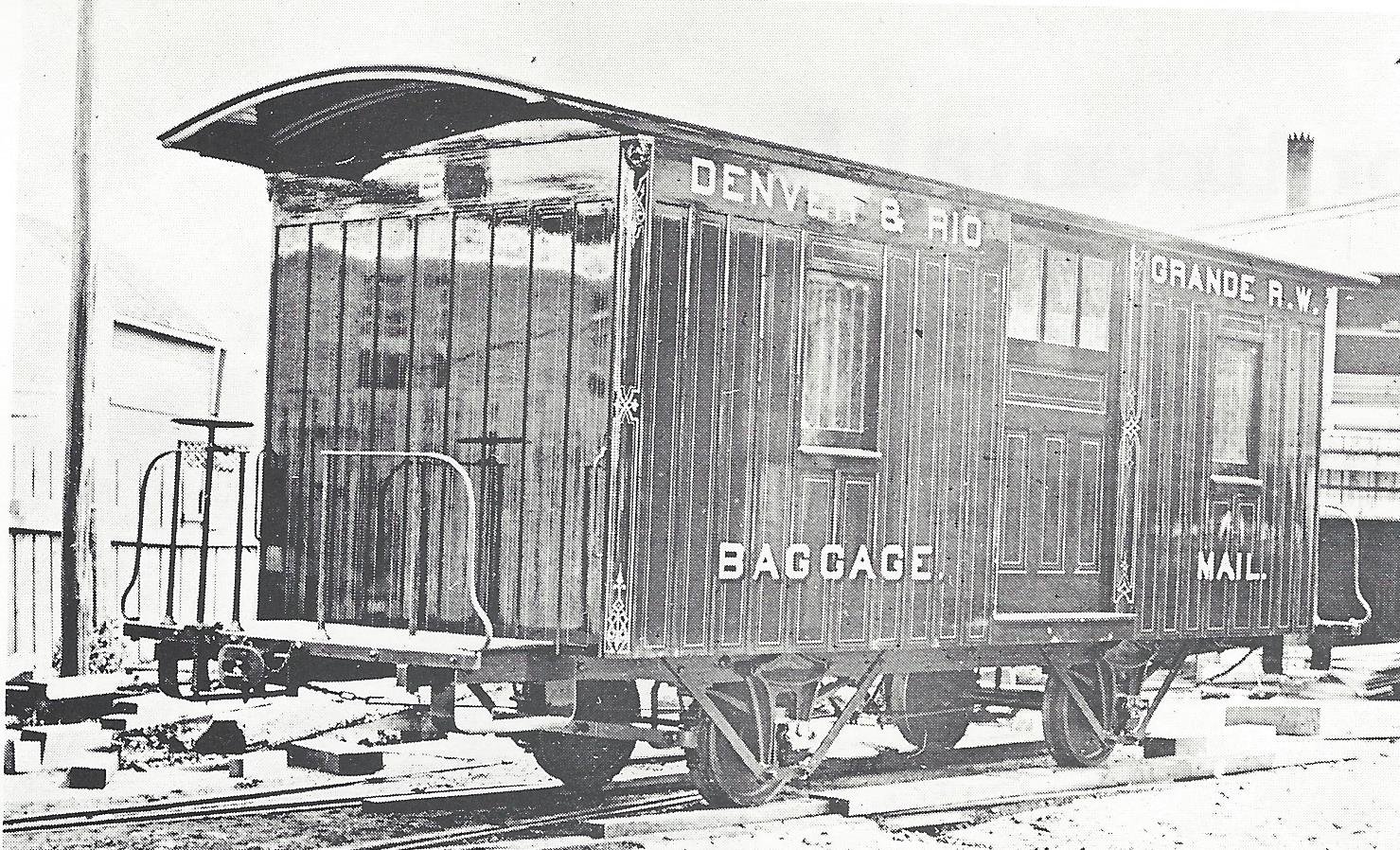
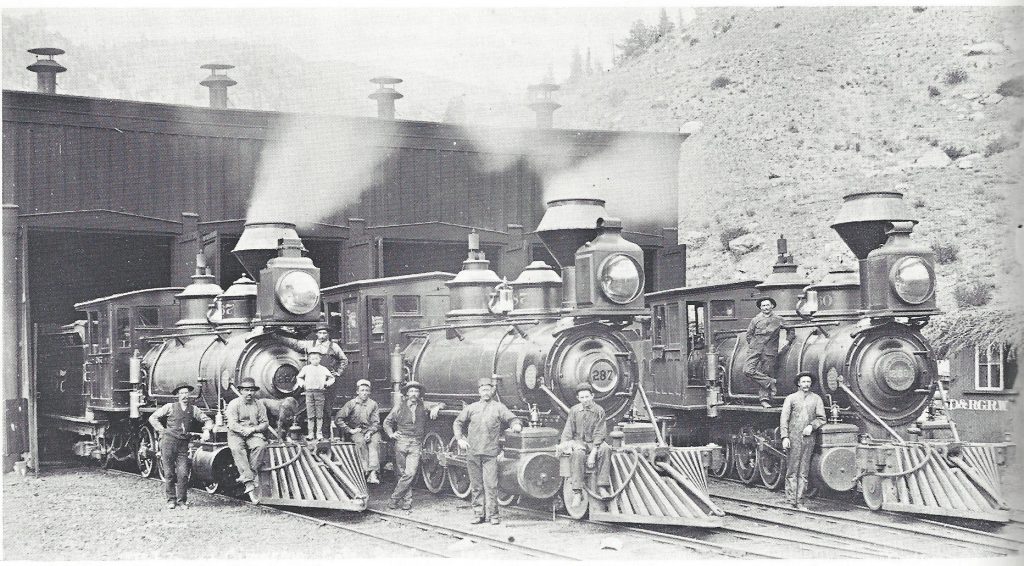
Ken Jeys has shared several photos of early D&RG locomotives marked RW on the tenders. Figure 3 and figure 4 are undated pictures of D&RG RW #267 and # 287 at Cimarron, CO. The paint appears new on both engines and tenders. These locomotives were built in 1882 according to Locomotives of the Rio Grande, Colorado Railroad Museum, 1980, pp. 19 & 20. Ken has also shared a photograph of D&RG locomotive #49 taken at West Water, UT, between March and May 1884. The tender is marked RW.
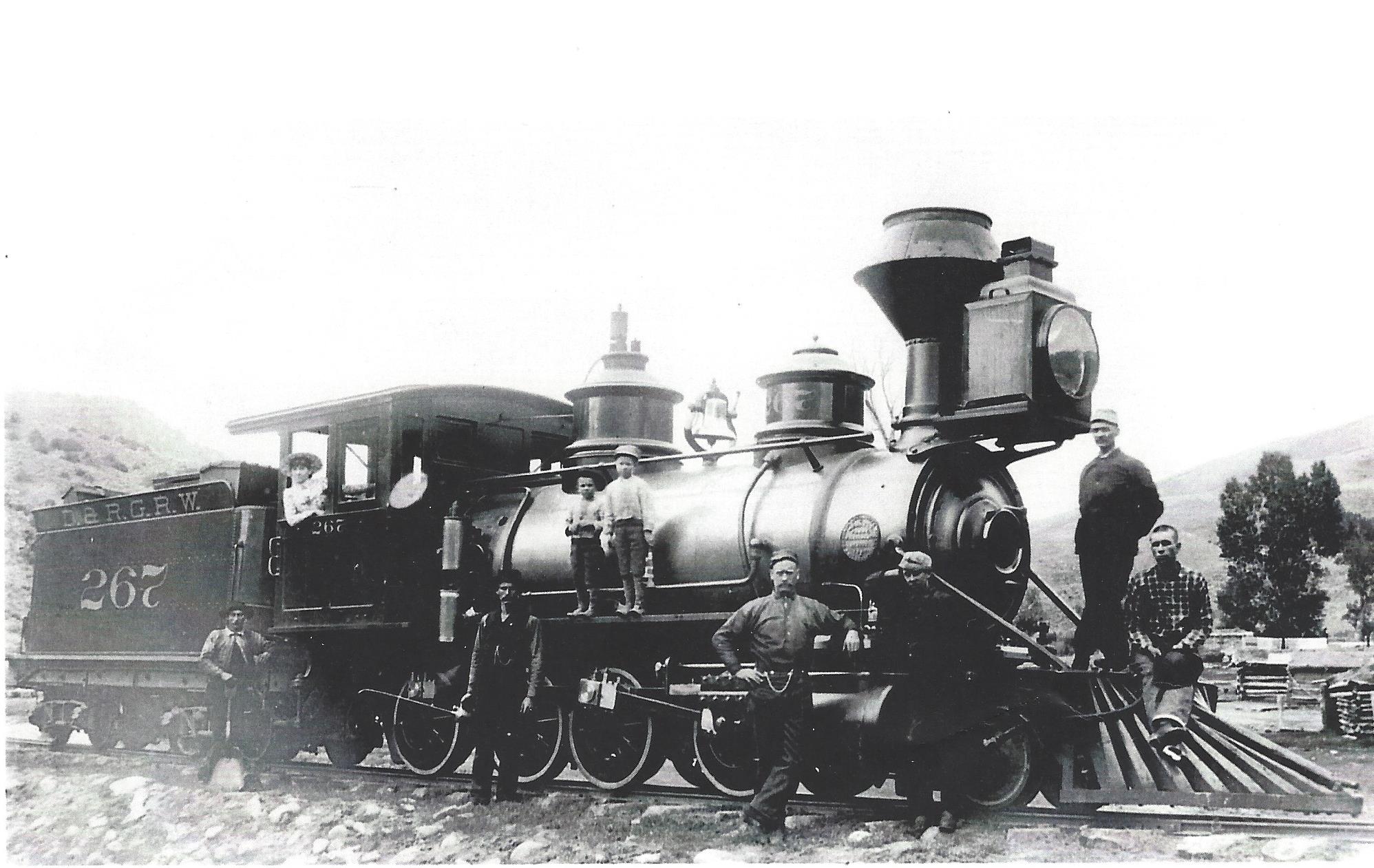
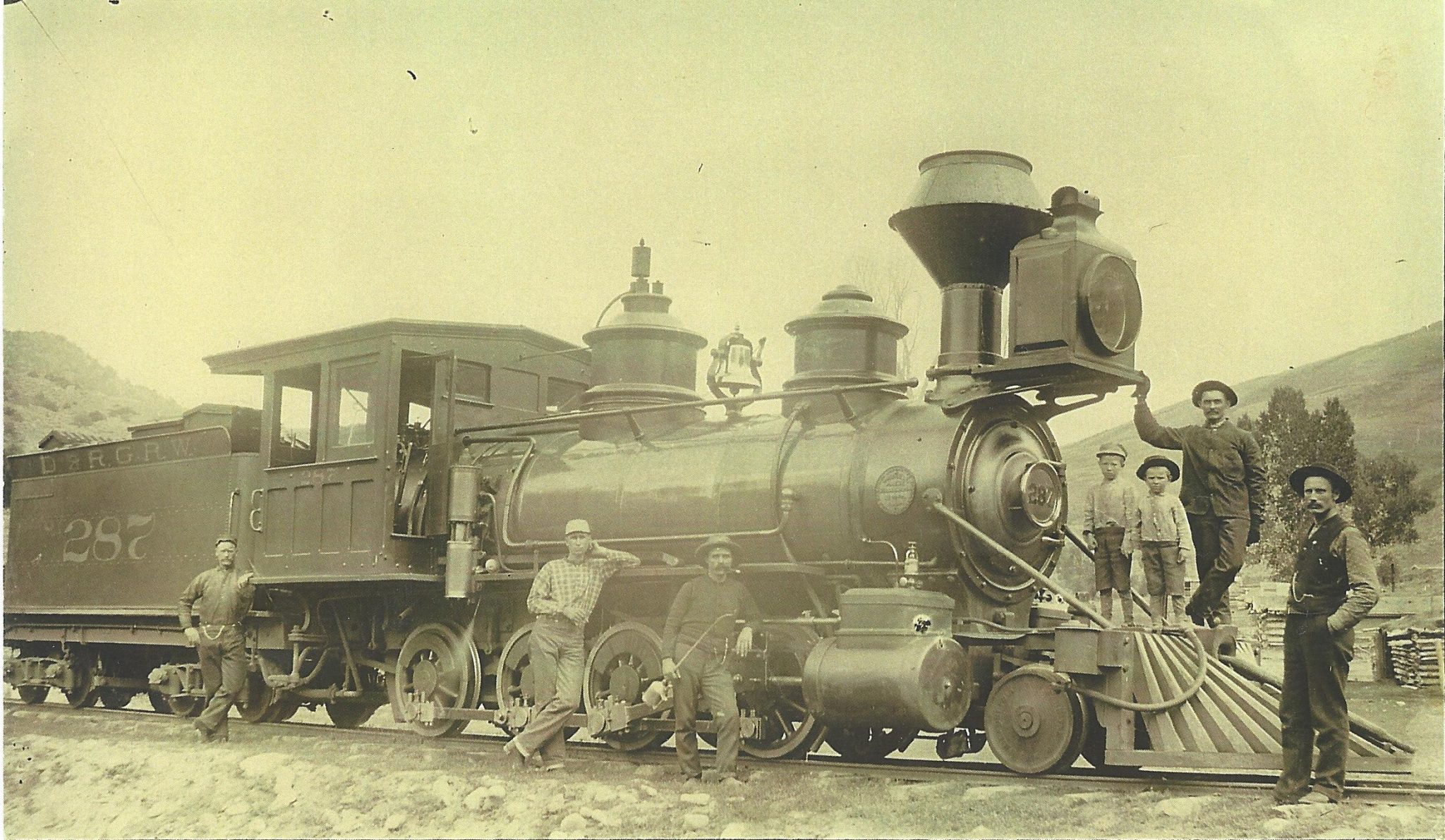
So it is clear the Denver & Rio Grande Railway had locomotives with Railway abbreviated as RW that were built in 1882. Since locomotives were not repainted frequently, it is probable the markings lasted into the mid to late 1880s with the same markings as the locomotives were first painted.
Mallory Hope Ferrell’s recent book Denver & Rio Grande The Early Years (White River Productions, 2018) devotes its entire first chapter to photographs of early D&RG locomotives, passenger cars and freight cars. Where Railway is abbreviated, on these cars RW is used. Photos of locomotive # 11(p. 28), a four wheel baggage/mail car (p. 34), flatcar #1 (p. 41), a 12 foot boxcar # 1001(p. 42), a flatcar #1501 (p. 44-45) and an eight wheel 24 foot boxcar #2001(p. 46) all show the abbreviation RW.
So the earliest rolling stock of the Denver & Rio Grande Railway Company is marked RW when Railway is abbreviated. And this is from the beginning of the D&RG until 1882. Equipment carried this marking into years after 1882 until it was repainted. I am aware of no photographs of equipment marked RY taken before 1882.
Large Railroad Hardware - Harp Switchstands, Coupler Pockets, Benches, etc...
Most of us have seen Harp switch stands with cast D&RGRW markings on them. These were first used with the D&RG 30 pound rail that was laid in the early 1870s. When the rail weight was increased these Harp switch stands were replaced with rotary switch stands. But the old Harps continued to be used by the Rio Grande Southern into the 1940s. Figure 5 shows the early markings on a Harp switch stand.
Many of the earliest D&RG depot benches have D&RGRW cast into the leg braces. These benches date from the start of the railway. Figure 6 shows the leg of a three person bench and how it is marked.
Roundhouse stoves were large stoves used to warm large areas such as roundhouses, working areas, etc. Figure 7 shows a photo of the doors used on some of these stoves. It is cast D&RGRW on an upper line and 1882 underneath that line. This conclusively proves that D&RGRW was still being used on equipment as late as 1882. This confirms the marking dates on locomotive tenders first manufactured in 1882.
Coupler pockets were also cast D&RGRW. Figure 8 shows one such surviving coupler pocket.
No large equipment marked D&RGRY has been documented to have existed before 1882 that I am aware of.
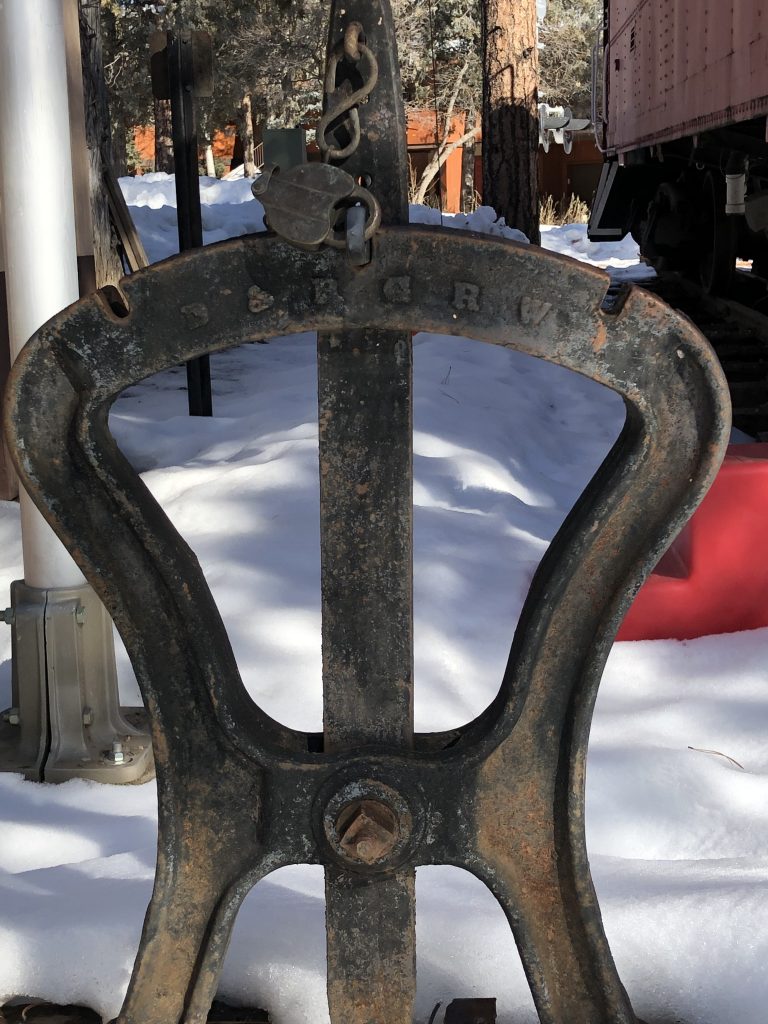
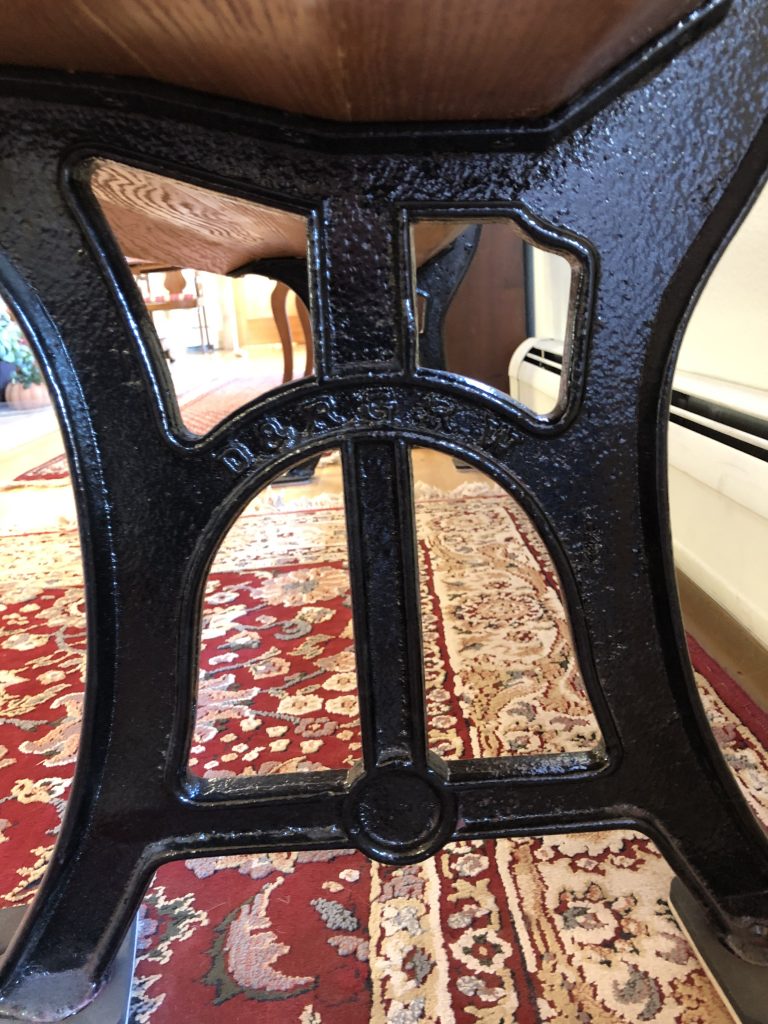
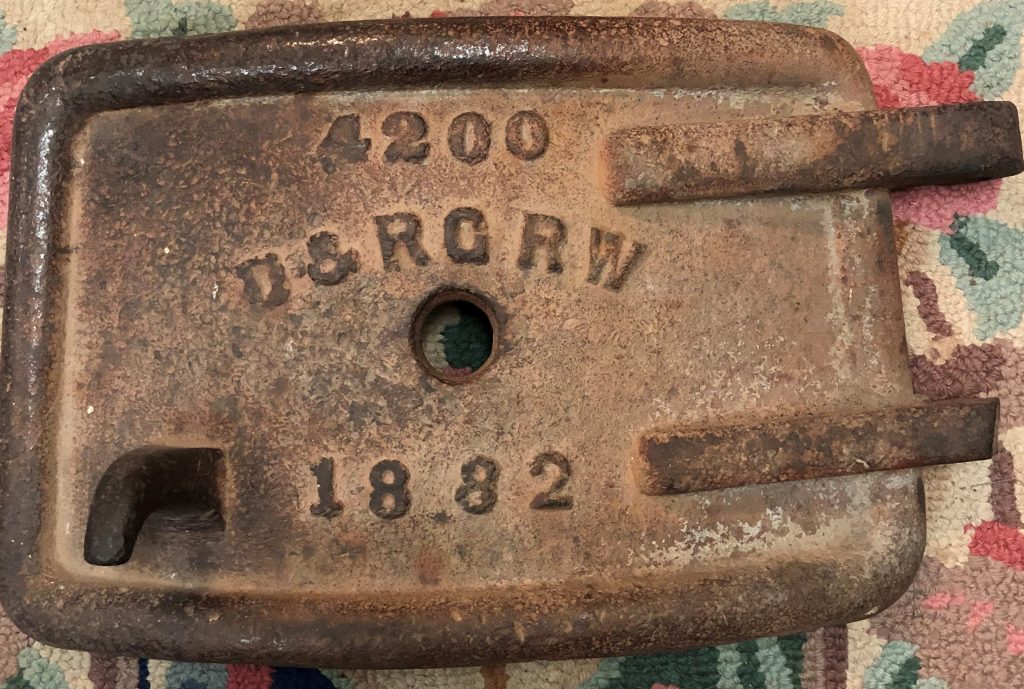
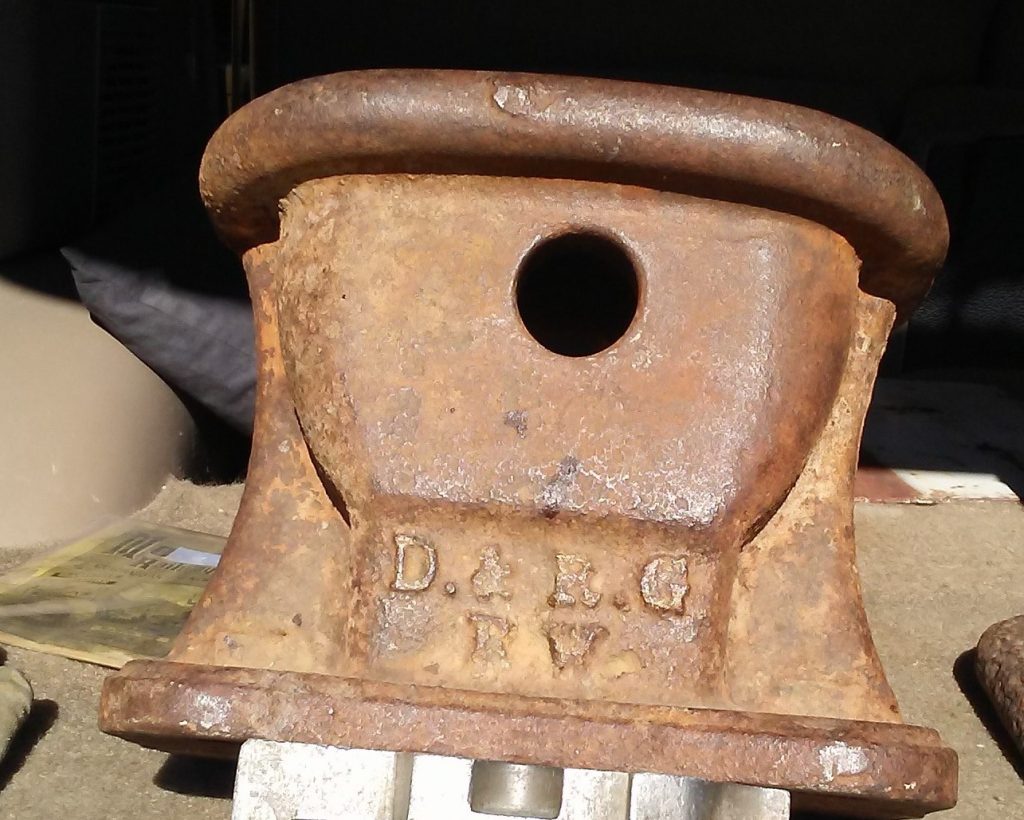
Small Railroad Hardware - Locks and Keys
In figure 9 we see an MM Buck lock stamped D&RGRW. There are now three of these locks known to exist. Two are complete and the third is missing the front face plate that holds the dust cover/key hole. Figure 10 shows this damaged lock (thanks to Frank Polzin). Note the D&RGRW stamping is on the opposite side of the lock from that shown in figure 9. On the reverse side of the lock pictured in figure 10 is the hasp showing a stamping of MM BUCK & Co (figure 11).
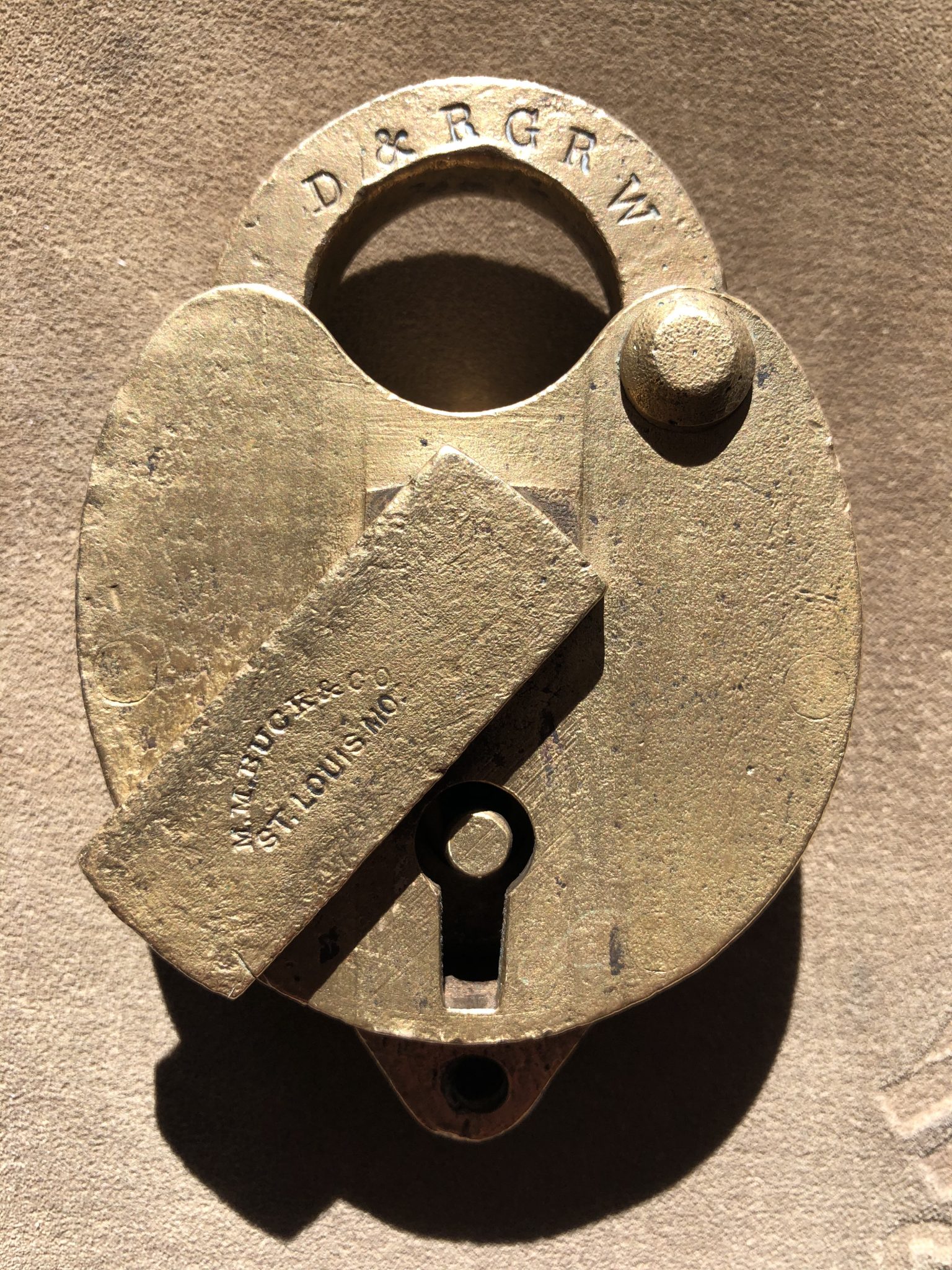

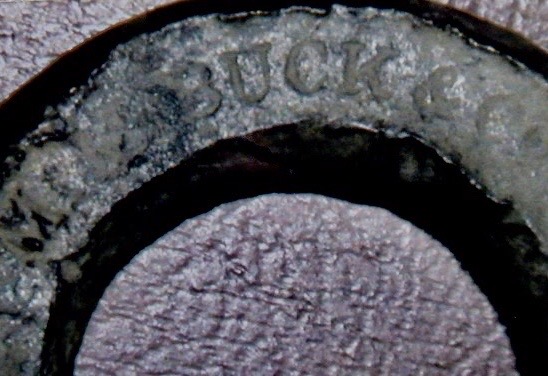
Figure 12 shows one of the dust covers on a complete lock while figure 13 shows the other dust cover known. All these locks are from the 1870-74 period due to the hasp rivet. It bulges out on both the front and back cover plates as seen in figures 9 and 10. In 1874 or 1875 MM Buck began producing locks with the hinge rivet being flush with the front and back face plates. The rivet did not protrude. I believe the lock dust cover pictured in figure 12 is made slightly earlier than the lock with the dust cover in figure 13. Note the major differences between the lettering in figures 12 and 13. In figure 12 there is ST. LOUIS MO. stamped below the arch of the M.M. BUCK & CO. stamping. While in figure 13 only ST. LOUIS is stamped and it is up inside the arch.


This style of presentation of ST. LOUIS inside the arch is seen on later DSP&P locks made in 1874 or later. Even then variations occur such as less space in the arch between the MM and BUCK than what is shown in figure 13, the characters used to separate the arch from ST. LOUIS (figure 13 has a line while the DSP&P locks have back to back pointed spears), and minor differences in spacing between ST. and LOUIS). My thanks to Dick Zinn for pointing out the variations in stampings between his dust cover and the DSP&P dust covers.
Therefore, in the space of 3 or 4 years major variations in the markings on the D&RGRW locks occurred – on the dust covers and the hasps.
As of January 2020 the first D&RGRW switch key has surfaced (figures 14 and 15 – thanks to Sue Knous of Railroad Memories). Note the stamping on the back of the key (figure 15) is identical to the stamping in figure 12 and different than the stamping in figure 13.
This key was not rotated all the way around (360 degrees) in either of the complete D&RGRW marked locks. It opened one of the D&RGRW locks but would not turn very far around in the other. The latter lock is opened by other early keys from other railroads. Regardless, there were marked D&RGRW switch keys. Hopefully more will turn up.


There are many stamped D&RGRY locks and keys that have been touted as being from the 1870s. For example there are the locks made by Post & Company starting in 1879. However, there is no proof these were manufactured and purchased before 1882. In fact, as I will discuss later, the big expansion of the Denver & Rio Grande Railway occurred in 1880-1882. The Denver & Rio Grande Railway used two other companies (the Rio Grande Extension Company or RGE Co and the Rio Grande Western Construction Company) to build its lines in Colorado and Utah starting in 1879 (CO) and 1881(UT). In fact the Rio Grande Extension Company was building the various lines and did not turn over the completed lines until 1881 or 1882. The RGE Co issued timetables and operated trains over the completed tracks. Hence even though much of the new mileage was constructed it was not operated by the Denver & Rio Grande Railway. Rather it was operated by the Rio Grande Extension Company. This was Palmer’s way of spreading out the cost of the expansion when he did not have the money to pay for the construction.
The early Post locks (Figure 16) have D&RGRY stamped in a semicircle with an S in the center as described by Bill Cunningham in his excellent document on early D&RGRY keys, locks and lanterns. Likewise Dayton locks from 1882 or later have D&RGRR stamped on them. The Post locks could have been made between 1882 and 1886 while the Dayton locks could have been produced in 1886 or later. There is no evidence that these locks were made before 1882.
If the RY stamped locks were not made before 1882 there was no need for any marked D&RGRY keys before 1882. To my knowledge no one has demonstrated that any keys stamped D&RGRY were produced before 1882.
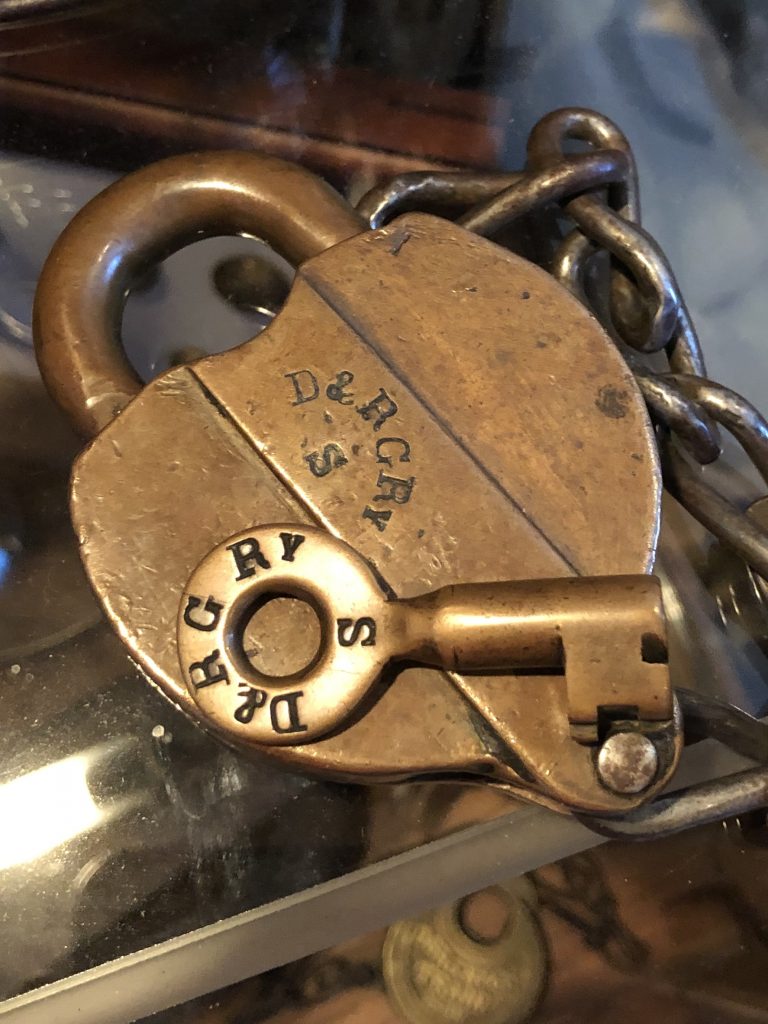
The most interesting Denver and Rio Grande locks not marked with RW are the six lever locks. The earliest are locks stamped D&RG R Co on the hasp or shackle. There are only a few of these known. They are the only D&RG railroad artifacts of which I am aware that have the R Co marking. Bill Cunningham has done an excellent job summarizing these six lever locks (October 19, 2019 communication). One such marked lock is known to exist with a marking that indicates it was made before November 1873. A few others were made later that have survived with a patent date of October 21, 1873. All are marked D&RG R Co on the shackle. Later D&RG six lever locks are cast locks. The five cast six lever lock styles are marked: D&RG, D&RGRwyCo CAR LOCK, D&RGRy ICE HOUSE LOCK, D&RGRy Co TRAIN BOX and D&RGRy WATER SERVICE. While it has been claimed that some of these locks were made in the 1870s I have seen no evidence that any with the possible exception of the generic D&RG six lever lock were manufactured before 1882.
Other Railroad Hardware - Lanterns, Globes, Whistles, Bells, Badges, etc...
To date there are no known marked D&RGRW lanterns or lantern globes. There are only two known marked D&RGRY lantern frames known. It appears that the D&RG Railway pretty much used unmarked lanterns and globes during the Railway years. Unmarked lanterns were significantly cheaper and Palmer was continually using the cheapest equipment he could.
Likewise I am not aware of any D&RGRW marked whistles or bells. Nor am I aware of any D&RGRY marked whistles or bells. If anyone is aware of any of these please contact me.
No badges marked RW exist that I am aware of. I believe clothe emblems were used on early uniforms and caps. Metal badges came into use in the mid to late 1870s. And the Denver & Rio Grande Railway only had less than 340 miles of track at the end of 1879 (private communication from Bill Cunningham). They did not need much equipment to operate this small a railroad at that time.
Paper Items
On railroad passes Railway is always spelled out and not abbreviated. I have seen no passes using RW or RY. Railway was usually spelled out on paper items.
Discussion Points
It appears to me that the Denver & Rio Grande Railway Company used RW to abbreviate Railway from the inception of the railroad in 1870 until at least 1882 and possibly early 1883. I believe that the use of RY to represent Railway occurred in the latter half of 1882 or early 1883. I have seen no hard evidence that items marked with RY were produced before 1882. I have seen no paper items marked RY produced before mid-1882 or early 1883. I hope this will be disproved, but the simplest answer is almost always the correct answer.
Why are there so few things marked RW? Large items like Harp switch stands that were used through the 1940s (on the Rio Grande Southern marked D&RG RW) and large stoves that were also used into the 20th century (marked D&RG RW, 1882) survived. Smaller items were discarded when they broke or turned in when newer items were used (locks, keys, etc.) or they wore out or were scrapped. And of course Railway was spelled out on many types of items and not abbreviated (passes, timetables, etc.). Also, in the early days equipment like lanterns, globes, whistles and bells were cheaper when not marked. Palmer ran the Denver & Rio Grande Railway on a shoe string. He built the railroad using the money from the builders. As an example he did not (probably could not) take possession of the branch from Pueblo to Canon City for five months from July to November 1874 (O. Meredith Wilson, The Denver And Rio Grande Project, 1870-1901, Howe Brothers, 1982, p. 24).
Speculation
The question is why Palmer changed the abbreviation of railway from RW to RY in 1882 or early 1883? One possible explanation is Palmer had incorporated the Denver & Rio Grande Western Railway in July of 1881 and he used RY to abbreviate Railway. Nothing has ever turned up marked D&RGW RW. Perhaps he wanted the D&RG to use the same abbreviation for Railway. We will probably never learn the answer. Another possible reason was he was expanding the Denver and Rio Grande Railway enormously in 1881 and 1882 and he was getting vast amounts of new equipment. A third possible explanation for the change from RW to RY might be the change in management of the D&RG. General Palmer left the D&RG in the summer of 1883 and was replaced by Frederick Lovejoy in September. Is it possible Lovejoy initiated the change in the abbreviation of Railway to RY? This would have been in the fall of 1883. Perhaps more will come to light about all of this.
Conclusion
The Denver & Rio Grande Railway Company used RW to mark its equipment when it abbreviated Railway from its inception in October 1870 until the latter half of 1882 or the first part of 1883. In many cases it spelled out Railway and did not use RW to abbreviate Railway. In the last half of 1882 or the first part of 1883 it then used RY to represent Railway until it emerged from bankruptcy in July 1886. It then used Railroad or RR to mark equipment or things. There are a few six lever locks also marked D&RG R Co probably made in the early to mid-1870s before the cast six lever locks were purchased beginning in 1882 or later. Much of the early Denver & Rio Grande equipment was unmarked because it was cheaper to buy it unmarked.
